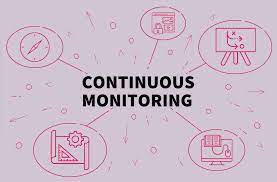Reading strategies that students do and don’t learn can impact their comprehension.
Think about how you respond when there’s a breakdown in your comprehension. What reading strategies do you implement as an effective reader?
Do you re-read for understanding?
What about reading aloud?
I don’t know about you, but sometimes I have to re-read and simultaneously read out loud to understand complex texts. Both are fix-up reading strategies that I employ to repair my comprehension.
Many of our students are ineffective readers because they don’t monitor comprehension.
Monitoring Comprehension

So, what does not monitoring comprehension look like in the classroom:
A student reads a passage fluently but is unable to retell and explain the ideas in the text. As an educator, if you have never experienced it, you will–indeed.
If students aren’t comprehending what they’re reading, they’re not reading. They’re just decoding–saying words without making meaning.
If we want to help our students become better readers, we must teach them the habits that effective readers employ. We can begin by teaching them to self-monitor.
“Self-monitoring involves metacognitive awareness, which is knowing when what one is reading makes sense by monitoring and controlling one’s own comprehension” (as cited in NSW Centre for Effective Reading, n.d.).
It’s been a little over 20 years, but I’ll never forget the question that was on every assessment in my teaching reading methods course.
And the question was: What is reading?
The expected answer: reading is an interactive process in which the reader engages with the text by employing a variety of strategies before, during, and after reading.
We can teach students how to engage with texts by teaching them how to self-monitor and repair their comprehension, which will strengthen their metacognitive muscle.
Learning to self-monitor and repair comprehension are life-long skills that we must teach students and provide time for practice. Students will spend most of their lives reading independently. It’s our responsibility to equip and empower them with skills to tackle and comprehend the texts they will encounter

Tell Me More About Reading Fix-Up Strategies
Fix-up strategies work for all students–not just students who struggle with comprehension. If you were to search the internet, you would find the following fix-up reading strategies:
- reread
- adjust reading speed
- read aloud
- read on
- make connections
- ask questions
- think about background knowledge
- create a visual in your mind
- use text features
- use context clues
The video below gives a classic example of a mistake that readers make and can fix-up when they self-monitor comprehension. After viewing the video, I recommend you visit the two sites provided to learn more about fix-up strategies.
Visit These Sites to Begin Implementing Fix-up Strategies
New Center for Effective Reading
This website provides everything you need to begin implementing fix-up strategies. It explains the what, why, and how of implementing fix-up strategies. It provides a fix-up strategy bookmark, graphic organizers, self-monitoring tools, and poster.
The Teacher Next Door
This website provides a list with a description of each fix-up strategies. It provides an idea for teaching the strategies and a set of downloadable fix-up strategies bookmarks.
This Reading Mama
This website gives the gist of fix-up strategies. It provides a list of strategies with a description, a few examples of prompts, and an example of how a teacher would model teaching the strategies. There’s also a free poster for you to download.






Leave a Comment